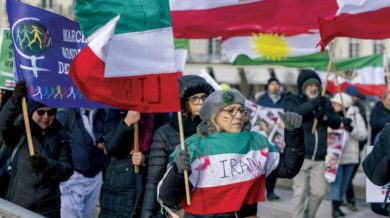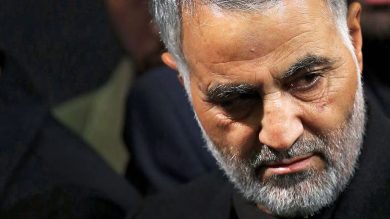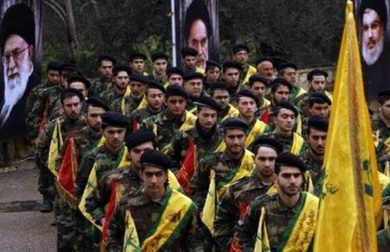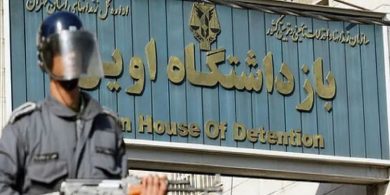Iran’s youth has emerged as a powerful force challenging the status quo, confronting systemic repression, and advocating for change in one of the most repressive environments in the world. At the center of their struggle stands the Islamic Revolutionary Guard Corps (IRGC), a military and ideological arm of the regime tasked with enforcing its authority and suppressing dissent. Despite the IRGC’s brutal tactics—ranging from violent crackdowns on protests to widespread surveillance—young Iranians are finding ways to resist, innovate, and build a movement for a freer future.
This article explores the critical role of Iran’s new generation in opposing the IRGC, their methods of resistance, and the implications for the future of Iran and its people
The Rising Tide of Youth Resistance
Iran’s demographics highlight the potential of its youth to drive change: approximately 60% of the population is under 30 years old. This new generation, born after the 1979 Islamic Revolution, is more connected, informed, and ambitious than any before it. They are also deeply frustrated by the political, economic, and social restrictions imposed by the regime, including the IRGC’s pervasive control over their lives.
Key Drivers of Youth Resistance
1. Economic Struggles
Rampant unemployment, inflation, and sanctions have created bleak economic prospects for young Iranians. Many blame the IRGC, which dominates key sectors of the economy, for corruption and mismanagement.
2. Social and Cultural Repression
The IRGC, through its Basij paramilitary force, enforces strict rules on dress, behavior, and public expression. Young Iranians, especially women, see these restrictions as outdated and oppressive.
3. Access to Technology and Global Perspectives
Despite internet censorship, young Iranians have found ways to connect with the outside world, exposing them to ideas of freedom and democracy. Social media platforms have become powerful tools for organizing and amplifying dissent.
4. Loss of Fear
The youth of Iran have shown a remarkable willingness to confront the IRGC directly. From street protests to digital activism, they are challenging the regime’s monopoly on power
Youth Movements and Protests
Over the past two decades, young Iranians have been at the forefront of major protest movements. Each uprising has demonstrated the growing courage and resilience of Iran’s youth in standing against the IRGC’s authority.
1. The Green Movement (2009)
Sparked by allegations of electoral fraud in the 2009 presidential election, the Green Movement saw millions of Iranians, many of them young people, take to the streets to demand democratic reforms. The IRGC and Basij responded with brutal force, killing dozens and arresting thousands. Despite its suppression, the movement laid the groundwork for future resistance.
2. 2017–2018 Protests
Triggered by economic grievances, these protests quickly evolved into a broader rejection of the regime. Young Iranians voiced their frustration with corruption, unemployment, and the IRGC’s role in siphoning resources to fund regional conflicts.
3. Protests Over Mahsa Amini’s Death (2022)
The death of 22-year-old Mahsa Amini, following her arrest by the morality police for allegedly violating hijab rules, ignited nationwide protests. Women and young people led these demonstrations, demanding accountability, justice, and systemic change. The IRGC responded with violent crackdowns, but the movement highlighted the bravery of Iran’s youth and their refusal to back down.
4. Ongoing Labor and Student Strikes
Students and young workers frequently organize strikes and sit-ins, demanding better conditions and greater freedoms. These actions disrupt the regime’s narrative of control and demonstrate the organizational capabilities of the younger generation
Methods of Resistance
Iran’s youth have developed innovative ways to resist the IRGC’s repression, combining traditional protest methods with modern technologies.
1. Digital Activism
Social media platforms like Instagram, Twitter, and Telegram have become vital tools for organizing protests, sharing information, and exposing the IRGC’s human rights abuses. Activists use encrypted messaging apps to coordinate, bypassing the regime’s surveillance.
2. Art and Culture
Music, graffiti, and poetry have become vehicles for dissent, with young artists challenging the regime’s authority through their work. This cultural resistance resonates deeply with other Iranians and draws international attention.
3. Underground Networks
In response to the IRGC’s heavy surveillance, young activists have formed underground networks to organize and mobilize. These networks provide safe spaces for planning and foster a sense of solidarity.
4. Public Defiance
Acts of public defiance, such as women removing their hijabs or students openly criticizing the regime, challenge the IRGC’s control and inspire others to join the resistance
The IRGC’s Response
The IRGC has employed a range of oppressive tactics to suppress youth-led movements, including:
• Violent Crackdowns: Protests are met with excessive force, including live ammunition, tear gas, and mass arrests.
• Surveillance: The IRGC uses advanced technology to monitor social media, track activists, and identify protest organizers.
• Arrests and Torture: Young activists are often detained without due process and subjected to torture and forced confessions in IRGC-controlled detention centers.
• Internet Blackouts: During periods of unrest, the IRGC frequently shuts down the internet to disrupt communication and obscure its violent crackdowns.
Despite these measures, the IRGC has failed to extinguish the spirit of resistance among Iran’s youth
Stories of Courage
1. Nika Shakarami
Sixteen-year-old Nika Shakarami became a symbol of the 2022 protests after her disappearance and death at the hands of security forces. Her bravery in standing against the regime inspired many others to join the movement.
2. The Women of Revolution Street
In 2017, young women in Tehran removed their hijabs and waved them on sticks in public defiance of Iran’s mandatory dress code. This act of courage sparked a nationwide movement for women’s rights.
3. Student Activists
University students continue to challenge the regime, organizing protests and strikes despite the risks of expulsion, arrest, or worse. Their resilience underscores the determination of Iran’s youth to fight for a better future
Global Impact and Solidarity
Iran’s youth movement has garnered significant international attention, with protests and advocacy campaigns spreading across the globe. Diaspora communities have played a crucial role in amplifying the voices of Iranian activists, while international organizations and governments have condemned the IRGC’s actions.
1. Calls for Accountability
Human rights groups have documented the IRGC’s abuses and called for sanctions against its leaders. These efforts aim to pressure the regime and support Iranian activists.
2. Diplomatic Efforts
Governments worldwide have imposed sanctions on the IRGC and its affiliates, targeting their financial networks and limiting their ability to operate internationally.
3. Global Protests
Demonstrations in solidarity with Iranian youth have taken place in cities worldwide, drawing attention to their struggle and building momentum for change
The Future of Resistance
The youth-led resistance against the IRGC represents a pivotal moment in Iran’s history. While the challenges are immense, the determination and creativity of this new generation offer hope for a brighter future.
1. Sustained Pressure
Continued protests and strikes, coupled with international support, can weaken the IRGC’s grip on power and create openings for reform.
2. Building Alliances
Young activists are increasingly collaborating with workers, women’s groups, and other marginalized communities, creating a united front against the regime.
3. Inspiring Change
The courage of Iran’s youth has inspired movements worldwide, demonstrating the power of collective action in the face of oppression
Conclusion
Iran’s youth are at the forefront of a transformative struggle against the IRGC and the regime it upholds. Their bravery, resilience, and innovation in the face of repression highlight the enduring desire for freedom and justice. While the path ahead is fraught with challenges, the determination of Iran’s new generation of change-makers offers hope for a future where human rights and democracy prevail. By standing with them, the international community can help amplify their voices and support their fight for a better Iran.
Join Our Newsletter!
Stay informed with the latest updates, news, and ways to take action in the fight for justice and global security. Sign up now to get updates delivered straight to your inbox!





